college+of+Engineering
-
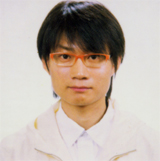 Ki-Won Lee Receives Best Student Paper Award
Ki-Won Lee Receives Best Student Paper Award
Ki-Won Lee, a doctoral student of Materials Science & Engineering, has received the Best Student Paper Award ‘Motorola Fellowship Award’ at 2007 Electronic Components and Technology Conference (ECTC).
Lee’s paper is about a new bonding process of anisotropic conductive film using ultrasonic wave, which applies ultrasonic wave, instead of thermal compression, at the room temperature to reduce the process time from ten to three seconds.
The recipients of Motorola Fellowship Award are selected by IEEE Components, Packaging and Manufacturing Technology Society, and Motorola awards special scholarship to recipients. The ECTC is the world’s largest yearly conference concerning electronic packaging technologies with more than 1,000 attendees and more than 300 presented papers.
2007.07.02 View 18241
Ki-Won Lee Receives Best Student Paper Award
Ki-Won Lee Receives Best Student Paper Award
Ki-Won Lee, a doctoral student of Materials Science & Engineering, has received the Best Student Paper Award ‘Motorola Fellowship Award’ at 2007 Electronic Components and Technology Conference (ECTC).
Lee’s paper is about a new bonding process of anisotropic conductive film using ultrasonic wave, which applies ultrasonic wave, instead of thermal compression, at the room temperature to reduce the process time from ten to three seconds.
The recipients of Motorola Fellowship Award are selected by IEEE Components, Packaging and Manufacturing Technology Society, and Motorola awards special scholarship to recipients. The ECTC is the world’s largest yearly conference concerning electronic packaging technologies with more than 1,000 attendees and more than 300 presented papers.
2007.07.02 View 18241 -
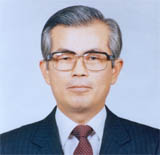 Emeritus Professor Lee Dies
Jeong-Oh Lee, Emeritus Professor of Mechanical Engineering, died of his chronic disease on June 15, 2007 at his age of 76.
The late Lee began his lecturing career at Mechanical Engineering Department in 1973 and had made considerable devotions to the education and development of mechanical engineering for 24 years. As the former Minister of Science and Technology, former President of Korea Institute of Science and Technology, and former President of Korea Advanced Institute of Science and Technology, he also has made significant contributions to the development of Korean science and technology.
Particularly, he played key roles in vitalizing Daeduk Research Complex (DRC) by planning and executing the movement of government-funded institutes despite the inactive research atmosphere in the early 1980s. He also set up the Extended Council for Technology Promotion, consisting of many distinguished persons from diverse fields under the supervision of the President, to make significant contributions to the promotion and spread of technology innovation among governmental and civil enterprises. He received Cheongjo Geunjeong Medal in 1985 and never stopped his devotion to the education of young students even after his retirement in 1997.
<Funeral Notice>- Date: Sunday, June 17, 2007 at 7 am.- Place: Eulji University Hospital, Daejeon- Graveyard: Cheonan graveyard- Bereaved family Wife Ok-Hyang Kang Son Jong-Sun Lee, Professor of Handong University Han-Sun Lee, LG Chemicals Daughter Myung-Ae Lee Son-in-law Young-Soo Lee, Korea Institute of Industrial Technology- Contact Point: C.P. 019.480.2451 (Han-Sun Lee)
2007.06.18 View 16578
Emeritus Professor Lee Dies
Jeong-Oh Lee, Emeritus Professor of Mechanical Engineering, died of his chronic disease on June 15, 2007 at his age of 76.
The late Lee began his lecturing career at Mechanical Engineering Department in 1973 and had made considerable devotions to the education and development of mechanical engineering for 24 years. As the former Minister of Science and Technology, former President of Korea Institute of Science and Technology, and former President of Korea Advanced Institute of Science and Technology, he also has made significant contributions to the development of Korean science and technology.
Particularly, he played key roles in vitalizing Daeduk Research Complex (DRC) by planning and executing the movement of government-funded institutes despite the inactive research atmosphere in the early 1980s. He also set up the Extended Council for Technology Promotion, consisting of many distinguished persons from diverse fields under the supervision of the President, to make significant contributions to the promotion and spread of technology innovation among governmental and civil enterprises. He received Cheongjo Geunjeong Medal in 1985 and never stopped his devotion to the education of young students even after his retirement in 1997.
<Funeral Notice>- Date: Sunday, June 17, 2007 at 7 am.- Place: Eulji University Hospital, Daejeon- Graveyard: Cheonan graveyard- Bereaved family Wife Ok-Hyang Kang Son Jong-Sun Lee, Professor of Handong University Han-Sun Lee, LG Chemicals Daughter Myung-Ae Lee Son-in-law Young-Soo Lee, Korea Institute of Industrial Technology- Contact Point: C.P. 019.480.2451 (Han-Sun Lee)
2007.06.18 View 16578 -
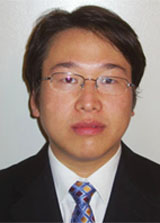 KAIST Graduate Selected As Winner of IEEE Outstanding Young Engineer Award
- First Korean winner of IEEE Outstanding Young Engineer Award
Dr. Myung-Jin Rhim, Bachelor, Master, and Ph.D of KAIST, has been selected to receive 2007 Outstanding Young Engineer Award by the Institute of Electrical and Electronics Engineers (IEEE) Components, Packaging, and Manufacturing Technology (CPMT) Society. Dr. Rhim will be the first Korean winner of the award.
Dr. Rhim received his Ph.D of Materials Science & Engineering at KAIST in 2001 and has made outstanding research outputs, such as 28 papers at international journals covered by Science Citation Index (SCI) and 12 international patents. He has been also listed in Marquis Who’s Who in the World, Who’s Who of Emerging Leaders, Who’s Who in Asia, and Outstanding Intellectual of the 21st Century, 21st Century Award for Achievement published by the International Biographical Centre of Cambridge, England.
IEEE CPMT Society has yearly awarded the Outstanding Young Engineer Award to a scientist or engineer of electronic components, packaging, and manufacturing technology prior to his or her 35th birthday in recognition of his or her research achievements. Dr. Rhim is now in his postdoctoral program at Georgia Institute of Technology in USA.
2007.06.14 View 17144
KAIST Graduate Selected As Winner of IEEE Outstanding Young Engineer Award
- First Korean winner of IEEE Outstanding Young Engineer Award
Dr. Myung-Jin Rhim, Bachelor, Master, and Ph.D of KAIST, has been selected to receive 2007 Outstanding Young Engineer Award by the Institute of Electrical and Electronics Engineers (IEEE) Components, Packaging, and Manufacturing Technology (CPMT) Society. Dr. Rhim will be the first Korean winner of the award.
Dr. Rhim received his Ph.D of Materials Science & Engineering at KAIST in 2001 and has made outstanding research outputs, such as 28 papers at international journals covered by Science Citation Index (SCI) and 12 international patents. He has been also listed in Marquis Who’s Who in the World, Who’s Who of Emerging Leaders, Who’s Who in Asia, and Outstanding Intellectual of the 21st Century, 21st Century Award for Achievement published by the International Biographical Centre of Cambridge, England.
IEEE CPMT Society has yearly awarded the Outstanding Young Engineer Award to a scientist or engineer of electronic components, packaging, and manufacturing technology prior to his or her 35th birthday in recognition of his or her research achievements. Dr. Rhim is now in his postdoctoral program at Georgia Institute of Technology in USA.
2007.06.14 View 17144 -
 Largest Number of Teams Selected From KAIST at 2007 LG Global Challenger Contest
Largest Number of Teams Selected From KAIST at 2007 LG Global Challenger Contest
The largest number of teams has been selected from KAIST at 2007 LG Global Challenger Contest
Despite of the record high competitive rate of 30/ 800, the largest number of teams has been selected from KAIST at 2007 LG Global Challenger Contest.
LG Global Challenger Contest is an exploration program where undergraduate and graduate students perform explorations on their own schedules and share the results with the public online.
Thus far, about 1,500 students from 410 teams have participated in the contest, and the contest is now regarded as the most representative overseas exploration program among university students, showing the average competitive rate of 1/ 20.
Exploration teams are selected by thorough examination and the members of selected teams have to complete the preliminary education program. The exploration teams will perform two-week overseas exploration on their own schedule during the summer vacation and their exploration activities will be relayed through the official web site of the contest by the designated team for online relay.
The exploration teams are obliged to submit the result reports, and the winners of the prize for good reports will be granted scholarship and employment privileges. The followings are the selected teams from KAIST:
Name: U-rekaTopic: U-Eco City, Advanced city where nature and human are well harmonizedMembers: A-Chim Chang (Department of Civil and Environmental Engineering)Hyuk-Il Cho (Department of Computer Sciences)Jung-Hyun Hong (Department of Industrial Engineering)Seung-Kyun Ryu (Department of Computer Sciences)
Name: TWIMTopic: The trend of unmanned ground vehicle development and its influence on unmanned societyMembers: Moon-Jung Byun (Department of Mechanical Engineering)Joon-Seok Park (Department of Electrical Engineering)Hye-Sun Hyun (Department of Electrical Engineering)Jong-Hoon Kim (Department of Electrical Engineering)
Team Impediment-free ODATopic: Future way of Korean ODAMembers: Joon-Youn Kim (Department of Industrial Engineering) Jae-Min Kim (Department of Industrial Engineering)Yoon-Jung Choi (Department of Industrial Engineering)Seul-Ki Lee (Department of Industrial Engineering)
2007.06.12 View 17915
Largest Number of Teams Selected From KAIST at 2007 LG Global Challenger Contest
Largest Number of Teams Selected From KAIST at 2007 LG Global Challenger Contest
The largest number of teams has been selected from KAIST at 2007 LG Global Challenger Contest
Despite of the record high competitive rate of 30/ 800, the largest number of teams has been selected from KAIST at 2007 LG Global Challenger Contest.
LG Global Challenger Contest is an exploration program where undergraduate and graduate students perform explorations on their own schedules and share the results with the public online.
Thus far, about 1,500 students from 410 teams have participated in the contest, and the contest is now regarded as the most representative overseas exploration program among university students, showing the average competitive rate of 1/ 20.
Exploration teams are selected by thorough examination and the members of selected teams have to complete the preliminary education program. The exploration teams will perform two-week overseas exploration on their own schedule during the summer vacation and their exploration activities will be relayed through the official web site of the contest by the designated team for online relay.
The exploration teams are obliged to submit the result reports, and the winners of the prize for good reports will be granted scholarship and employment privileges. The followings are the selected teams from KAIST:
Name: U-rekaTopic: U-Eco City, Advanced city where nature and human are well harmonizedMembers: A-Chim Chang (Department of Civil and Environmental Engineering)Hyuk-Il Cho (Department of Computer Sciences)Jung-Hyun Hong (Department of Industrial Engineering)Seung-Kyun Ryu (Department of Computer Sciences)
Name: TWIMTopic: The trend of unmanned ground vehicle development and its influence on unmanned societyMembers: Moon-Jung Byun (Department of Mechanical Engineering)Joon-Seok Park (Department of Electrical Engineering)Hye-Sun Hyun (Department of Electrical Engineering)Jong-Hoon Kim (Department of Electrical Engineering)
Team Impediment-free ODATopic: Future way of Korean ODAMembers: Joon-Youn Kim (Department of Industrial Engineering) Jae-Min Kim (Department of Industrial Engineering)Yoon-Jung Choi (Department of Industrial Engineering)Seul-Ki Lee (Department of Industrial Engineering)
2007.06.12 View 17915 -
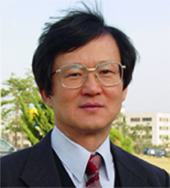 Prof. Lee Plants Commemorative Flower at NUAA
Prof. Lee Plants Commemorative Flower at NUAA
Professor In Lee of Aerospace Engineering planted a commemorative flower - Hibiscus, the national flora of South Korea - at Nanjing University of Aeronautics and Astronautics (NUAA) on May 25, 2007. While some Chinese Nobel laureates have planted commemorative trees, Professor Lee is the first foreigner who has planted a commemorative flower at NUAA. His planting is expected to contribute to opening academic and research exchanges between South Korea and China.
NUAA is the top university of China in the field of Aerospace Engineering and a technical university consisting of 2,800 faculty and staff and 26,000 students.
NUAA has colleges of Aerospace Engineering, Science, Engineering, Management, Art, Humanity, Foreign Language, and International Education and actively promotes international academic and research exchanges and international student program.
2007.06.12 View 13144
Prof. Lee Plants Commemorative Flower at NUAA
Prof. Lee Plants Commemorative Flower at NUAA
Professor In Lee of Aerospace Engineering planted a commemorative flower - Hibiscus, the national flora of South Korea - at Nanjing University of Aeronautics and Astronautics (NUAA) on May 25, 2007. While some Chinese Nobel laureates have planted commemorative trees, Professor Lee is the first foreigner who has planted a commemorative flower at NUAA. His planting is expected to contribute to opening academic and research exchanges between South Korea and China.
NUAA is the top university of China in the field of Aerospace Engineering and a technical university consisting of 2,800 faculty and staff and 26,000 students.
NUAA has colleges of Aerospace Engineering, Science, Engineering, Management, Art, Humanity, Foreign Language, and International Education and actively promotes international academic and research exchanges and international student program.
2007.06.12 View 13144 -
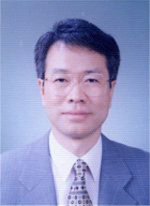 Prof. Whang Named Distinguished Database Profile by ACM SIGMOD
Professor Kyu-Young Whang of Computer Sciences has been named as Distinguished Database Profile (DDP) by Association for Computing Machinery Special Interest Group on Management Of Data (ACM SIGMOD).
DDP is a section of ACM SIGMOD Record that introduces researchers who have made significant global contributions in database field.
Thus far, about 20 researchers including Jeff Ullman and Jim Gray have been named as DDPs for their achievements such as establishment of new theories and technologies in database field, and Prof. Hwang is the first researcher named as DDP in the Asian-Pacific region.
Prof. Whang’s interview (directed by Marianne Winslett, Professor of UIUC, and Eric Bina, co-founder of Netscape) can be seen on http://www.sigmod.org/interviews and will be published at ACM SIGMOD Record in 2008.
2007.06.07 View 14479
Prof. Whang Named Distinguished Database Profile by ACM SIGMOD
Professor Kyu-Young Whang of Computer Sciences has been named as Distinguished Database Profile (DDP) by Association for Computing Machinery Special Interest Group on Management Of Data (ACM SIGMOD).
DDP is a section of ACM SIGMOD Record that introduces researchers who have made significant global contributions in database field.
Thus far, about 20 researchers including Jeff Ullman and Jim Gray have been named as DDPs for their achievements such as establishment of new theories and technologies in database field, and Prof. Hwang is the first researcher named as DDP in the Asian-Pacific region.
Prof. Whang’s interview (directed by Marianne Winslett, Professor of UIUC, and Eric Bina, co-founder of Netscape) can be seen on http://www.sigmod.org/interviews and will be published at ACM SIGMOD Record in 2008.
2007.06.07 View 14479 -
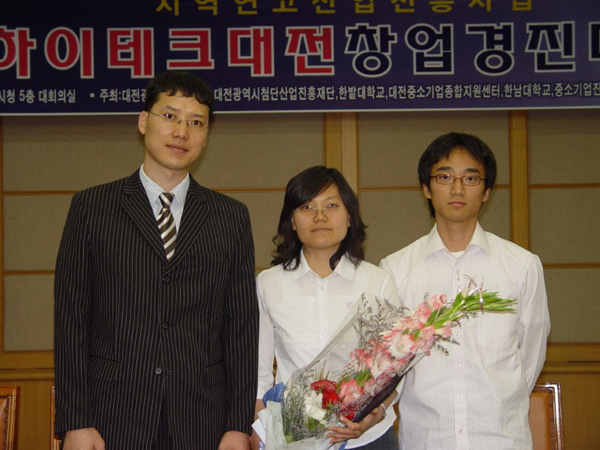 KAIST Students Wins Gold Prize at Technical Idea Contest
KAIST Students Wins Gold Prize at Technical Idea Contest
- Receive the gold prize at the 3rd High-Tech Daejeon Technical Idea Contest for Company Establishment- For the development of a new system to convert complex web page addresses to short and meaningful addresses
Sang-Hoon Kim, Song-Hwa Chae and Dong-Hun Lee of Chemical and Biomolecular Engineering won the gold prize at the prospective company establishment part in the 3rd High-Tech Daejeon Technical Idea Contest for Company Establishment on May 21 for their valuable development of ‘Web Page Address Clipping System’.
So far, simplified web page addresses include special characters, which make the addresses long and complex. That is, the current address simplification service combines meaningless random words and numerals to create addresses when web page addresses are entered. In this case, the addresses are not easy to share with others and reuse several times since they are difficult to memorize.
However, the ‘Web Page Address Clipping System’ shortens meaningless long addresses. In addition, the improved address simplification service will provide user’s own addresses, and statistics and ranking to clipping addresses frequently used.
Based on this technology, Kim and Chae are now preparing to open a company called ‘URLClip’ under the auspice of Professor Tae-Yong Yang and Researcher In-Soo Kim, KAIST Entrepreneurship Center. They are also expanding their service areas onto clipping library for individual users, host name services for enterprises, etc. and developing tool bar, RSS service (RSS is an acronym of RDF (or Rich) Site Summary. It refers to a service that automatically and easily provides frequently updated contents such as news and blogs to users), etc. to improve users’ conveniences.
URLClip (http://www.urlclip.net) is a next generation portal site, which is expected to provide a variety of individualized services based on Web Page Address Clipping Service and to be used by many enterprises as well as individual users who wish to enhance their access to useful contents.
“Chemical & Biomolecular Engineering Professor Sun-Won Park has offered lots of helps and supports, so I could decide to commercialize the developed technologies. The application of this technology to real life will allow further comfortable uses of internet to users,” Kim said.
Narae Team received the best prize last April at the 2nd Pre-Star Venture Company-Opening Contest hosted by KAIST and Hanbat Univeristy, and the technology is pending a patent application.
Inquiry:Sang-Hoon Kim, Dep. of Chemical and Biomolecular Engineering, H.P. 010-4754-9947Song-Hwa Chae, Dep. of Chemical and Biomolecular Engineering, H.P. 010-7223-9947Home page: http://www.urlclip.netEmail: urlclip@urlclip.net
2007.06.05 View 16290
KAIST Students Wins Gold Prize at Technical Idea Contest
KAIST Students Wins Gold Prize at Technical Idea Contest
- Receive the gold prize at the 3rd High-Tech Daejeon Technical Idea Contest for Company Establishment- For the development of a new system to convert complex web page addresses to short and meaningful addresses
Sang-Hoon Kim, Song-Hwa Chae and Dong-Hun Lee of Chemical and Biomolecular Engineering won the gold prize at the prospective company establishment part in the 3rd High-Tech Daejeon Technical Idea Contest for Company Establishment on May 21 for their valuable development of ‘Web Page Address Clipping System’.
So far, simplified web page addresses include special characters, which make the addresses long and complex. That is, the current address simplification service combines meaningless random words and numerals to create addresses when web page addresses are entered. In this case, the addresses are not easy to share with others and reuse several times since they are difficult to memorize.
However, the ‘Web Page Address Clipping System’ shortens meaningless long addresses. In addition, the improved address simplification service will provide user’s own addresses, and statistics and ranking to clipping addresses frequently used.
Based on this technology, Kim and Chae are now preparing to open a company called ‘URLClip’ under the auspice of Professor Tae-Yong Yang and Researcher In-Soo Kim, KAIST Entrepreneurship Center. They are also expanding their service areas onto clipping library for individual users, host name services for enterprises, etc. and developing tool bar, RSS service (RSS is an acronym of RDF (or Rich) Site Summary. It refers to a service that automatically and easily provides frequently updated contents such as news and blogs to users), etc. to improve users’ conveniences.
URLClip (http://www.urlclip.net) is a next generation portal site, which is expected to provide a variety of individualized services based on Web Page Address Clipping Service and to be used by many enterprises as well as individual users who wish to enhance their access to useful contents.
“Chemical & Biomolecular Engineering Professor Sun-Won Park has offered lots of helps and supports, so I could decide to commercialize the developed technologies. The application of this technology to real life will allow further comfortable uses of internet to users,” Kim said.
Narae Team received the best prize last April at the 2nd Pre-Star Venture Company-Opening Contest hosted by KAIST and Hanbat Univeristy, and the technology is pending a patent application.
Inquiry:Sang-Hoon Kim, Dep. of Chemical and Biomolecular Engineering, H.P. 010-4754-9947Song-Hwa Chae, Dep. of Chemical and Biomolecular Engineering, H.P. 010-7223-9947Home page: http://www.urlclip.netEmail: urlclip@urlclip.net
2007.06.05 View 16290 -
 Research Outputs over Carbon Nanotube by Prof. Choi Selected as Research Highlight by ACS
Research Outputs over Carbon Nanotube by Prof. Choi Selected as Research Highlight by ACS
Research Outputs over Carbon Nanotube by Prof. Choi Selected as Research Highlight by ACS
A research team headed by Seong-Min Choi, a professor of Nuclear and Quantum Engineering, KAIST, has developed technologies to stably disperse carbon nanotube particles in aqueous solutions and organic solvents, essential for industrial applications of carbon nanotube, and discovered the dispersion characteristics of carbon nanotube. The research outputs have been published by ‘Advanced materials’ (19, 929, 2007), the most distinguished journal in Material Science field, and introduced as Research Highlight at the May 7th edition of ‘Heart Cut’ by the American Chemical Society (ACS).
A number of processes for industrial applications of carbon nanotube require the dispersion of carbon nanotube in aqueous solutions or organic solvents, and thus far, surfactant particles or DNAs have been used to disperse carbon nanotube particles. However, they have shortcomings of easy destruction of dispersion. In order to overcome such shortcomings, Prof. Choi’s team produced carbon nanotube particle-dispersed aqueous solutions by using surfactant particles and then polymerized surfactant particles absorbed to the surfaces of carbon nanotube in situ to develop carbon nanotube with hydrophile and safe surfaces. The functional carbon nanotube so obtained shows features of easy dispersion in aqueous solutions and organic solvents even after being processed, such as freeze drying, therefore, is expected to significantly contribute to the development of application technologies of carbon nanotubes. Tae-Hwan Kim and Chang-Woo Doh, both doctoral students, played key roles in the researches carried out under the auspices of the Ministry of Science and Technology (MOST) as a nuclear power R&D project, and the relevant technologies were filed for patent applications.
Figures: Carbon nanotube before polymerization (left), carbon nanotube polymerized with surfactant particles (right)
2007.05.14 View 14418
Research Outputs over Carbon Nanotube by Prof. Choi Selected as Research Highlight by ACS
Research Outputs over Carbon Nanotube by Prof. Choi Selected as Research Highlight by ACS
Research Outputs over Carbon Nanotube by Prof. Choi Selected as Research Highlight by ACS
A research team headed by Seong-Min Choi, a professor of Nuclear and Quantum Engineering, KAIST, has developed technologies to stably disperse carbon nanotube particles in aqueous solutions and organic solvents, essential for industrial applications of carbon nanotube, and discovered the dispersion characteristics of carbon nanotube. The research outputs have been published by ‘Advanced materials’ (19, 929, 2007), the most distinguished journal in Material Science field, and introduced as Research Highlight at the May 7th edition of ‘Heart Cut’ by the American Chemical Society (ACS).
A number of processes for industrial applications of carbon nanotube require the dispersion of carbon nanotube in aqueous solutions or organic solvents, and thus far, surfactant particles or DNAs have been used to disperse carbon nanotube particles. However, they have shortcomings of easy destruction of dispersion. In order to overcome such shortcomings, Prof. Choi’s team produced carbon nanotube particle-dispersed aqueous solutions by using surfactant particles and then polymerized surfactant particles absorbed to the surfaces of carbon nanotube in situ to develop carbon nanotube with hydrophile and safe surfaces. The functional carbon nanotube so obtained shows features of easy dispersion in aqueous solutions and organic solvents even after being processed, such as freeze drying, therefore, is expected to significantly contribute to the development of application technologies of carbon nanotubes. Tae-Hwan Kim and Chang-Woo Doh, both doctoral students, played key roles in the researches carried out under the auspices of the Ministry of Science and Technology (MOST) as a nuclear power R&D project, and the relevant technologies were filed for patent applications.
Figures: Carbon nanotube before polymerization (left), carbon nanotube polymerized with surfactant particles (right)
2007.05.14 View 14418 -
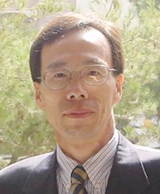 Professor Yang Named Recipient of Dupont Science & Technology Award
Professor Yang Named Recipient of Dupont Science & Technology Award
- Named as the recipient of Dupont Science & Technology Award of 2007- In recognition of his development of optical?bio-functional photonic crystal structures through Self-assembly of nanoparticles
Seung-Man Yang, a professor of Chemical and Biomolecular Engineering of KAIST (President Nam Pyo Suh) and the president of the National Creative Research Initiatives Center for Photon and Fluid Integrated Circuit by the Ministry of Science and Technology, has been named as the recipient of Dupont Science & Technology Award.
Dupont Korea, associate of Dupont, a world-class science firm, has established and conferred ‘Dupont Science & Technology Award’ since 2002 to promote basic sciences and industrial development of Korea. Dupont Science & Technology Awards are awarded to scientists of universities or state-run institutes who have made outstanding R&D achievements in the fields of Chemistry, Chemical Engineering, Material Science and Material Engineering within five years. Dupont Korea announced on May 2, 2007 that Professor Yang is the recipient of the award this year, following the strict examination by the Koran Academy of Science and Technology (KAST).
The reason for the award is Professor Yang’s development of prototype optical?bio-functional photonic crystal structures that can process a huge amount of data, resulting from a study that has discovered the principle of Self-assembly where multifunctional nanoparticles are manufactured and assembled for themselves.
Professor Yang’s recent research result about photon structures and nano patterns was published by Nature (February 2, 2006 edition); posted on Heart-Cut, the portal site of the American Chemistry Society (ACS), as highlight paper two times (November 4, 2002 and May 1, 2006); and introduced at Research/Researcher of MRS Bulletin by the U.S. Material Research Society (MRS) as main paper in December 2003. Professor Yang is very famous in Korea and abroad for the excellences of his research achievements and has made request seminars at Harvard University, University of Wisconsin, Caltech, University of California, etc. He is also invited speaker and session organizer of the MRS and the SPIE.
2007.05.08 View 19697
Professor Yang Named Recipient of Dupont Science & Technology Award
Professor Yang Named Recipient of Dupont Science & Technology Award
- Named as the recipient of Dupont Science & Technology Award of 2007- In recognition of his development of optical?bio-functional photonic crystal structures through Self-assembly of nanoparticles
Seung-Man Yang, a professor of Chemical and Biomolecular Engineering of KAIST (President Nam Pyo Suh) and the president of the National Creative Research Initiatives Center for Photon and Fluid Integrated Circuit by the Ministry of Science and Technology, has been named as the recipient of Dupont Science & Technology Award.
Dupont Korea, associate of Dupont, a world-class science firm, has established and conferred ‘Dupont Science & Technology Award’ since 2002 to promote basic sciences and industrial development of Korea. Dupont Science & Technology Awards are awarded to scientists of universities or state-run institutes who have made outstanding R&D achievements in the fields of Chemistry, Chemical Engineering, Material Science and Material Engineering within five years. Dupont Korea announced on May 2, 2007 that Professor Yang is the recipient of the award this year, following the strict examination by the Koran Academy of Science and Technology (KAST).
The reason for the award is Professor Yang’s development of prototype optical?bio-functional photonic crystal structures that can process a huge amount of data, resulting from a study that has discovered the principle of Self-assembly where multifunctional nanoparticles are manufactured and assembled for themselves.
Professor Yang’s recent research result about photon structures and nano patterns was published by Nature (February 2, 2006 edition); posted on Heart-Cut, the portal site of the American Chemistry Society (ACS), as highlight paper two times (November 4, 2002 and May 1, 2006); and introduced at Research/Researcher of MRS Bulletin by the U.S. Material Research Society (MRS) as main paper in December 2003. Professor Yang is very famous in Korea and abroad for the excellences of his research achievements and has made request seminars at Harvard University, University of Wisconsin, Caltech, University of California, etc. He is also invited speaker and session organizer of the MRS and the SPIE.
2007.05.08 View 19697 -
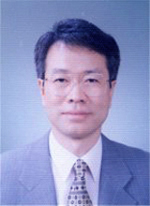 Prof. Hwang Inaugurated as 22nd President of KISS
Prof. Hwang Inaugurated as 22nd President of KISS
Kyu-Young Hwang, a professor of Computer Sciences, has been inaugurated as the 22nd president of the Korea Information Science Society (KISS). The KISS, established in 1973, is Korea’s largest computer science-related society holding about 4,000 members.
Prof. Hwang is now managing programs to issue the society’s publications and for information exchanges and putting huge efforts on promoting global cooperation and strengthening the partnership with overseas institutions to raise the society’s global standings. He is also making great efforts to enhance the capabilities and competitiveness of future human resources through a program to improve education systems concerning computer/ programming.
2007.04.30 View 12856
Prof. Hwang Inaugurated as 22nd President of KISS
Prof. Hwang Inaugurated as 22nd President of KISS
Kyu-Young Hwang, a professor of Computer Sciences, has been inaugurated as the 22nd president of the Korea Information Science Society (KISS). The KISS, established in 1973, is Korea’s largest computer science-related society holding about 4,000 members.
Prof. Hwang is now managing programs to issue the society’s publications and for information exchanges and putting huge efforts on promoting global cooperation and strengthening the partnership with overseas institutions to raise the society’s global standings. He is also making great efforts to enhance the capabilities and competitiveness of future human resources through a program to improve education systems concerning computer/ programming.
2007.04.30 View 12856 -
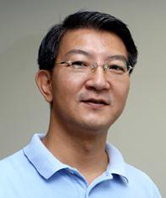 Maximum Yield Amino Acid-Producing Microorganism Developed with use of System Biotechnology
Maximum Yield Amino Acid-Producing Microorganism Developed with use of System Biotechnology
A team led by Sang-Yup Lee, a distinguished professor of Chemical and Biomolecular Engineering and chair professor of LG Chemical, has succeeded in developing maximum yield L-valine-producing microorganism by using System Biotechnology methods. The research results will be published at the April fourth week (April 23 - 27) edition of the Proceedings of the National Academy of Sciences (PNAS) of the USA.
Prof. Lee’s team has developed maximum yield amino acid-producing microorganism (target substance of L-valine, an essential amino-acid) by using microorganism E cell system and simulation methods.
His team produced initial producing microorganism by selectively operating necessary parts in colon bacillus genome and excavated preliminary target gene which is to newly be operated through transcriptome analysis using DNA chips. Then they performed a great amount of gene deletion experiment on computer by using MBEL979, E-cells of colon bacillus, and excavated secondary engineering targets. And they finally succeeded in developing maximum yield valine-producing microorganism that can extract 37.8 grams of valine from 100 grams of glucose by applying experiment results to the actual development of microorganism so as to achieve the optimization of metabolic flux in cells,
Prof. Lee said, “Since successfully used for the development of microorganism on a systematic system level, system biotechnology methods are expected to significantly contribute to the development of all biotechnology-relevant industries. At the beginning, we had huge obstacles in fusing IT and BT, but my team mates cleverly overcame such obstacles, hence I’m very proud of them.” The producing microorganism and its developing methods are pending international applications (PCT).
2007.04.26 View 15351
Maximum Yield Amino Acid-Producing Microorganism Developed with use of System Biotechnology
Maximum Yield Amino Acid-Producing Microorganism Developed with use of System Biotechnology
A team led by Sang-Yup Lee, a distinguished professor of Chemical and Biomolecular Engineering and chair professor of LG Chemical, has succeeded in developing maximum yield L-valine-producing microorganism by using System Biotechnology methods. The research results will be published at the April fourth week (April 23 - 27) edition of the Proceedings of the National Academy of Sciences (PNAS) of the USA.
Prof. Lee’s team has developed maximum yield amino acid-producing microorganism (target substance of L-valine, an essential amino-acid) by using microorganism E cell system and simulation methods.
His team produced initial producing microorganism by selectively operating necessary parts in colon bacillus genome and excavated preliminary target gene which is to newly be operated through transcriptome analysis using DNA chips. Then they performed a great amount of gene deletion experiment on computer by using MBEL979, E-cells of colon bacillus, and excavated secondary engineering targets. And they finally succeeded in developing maximum yield valine-producing microorganism that can extract 37.8 grams of valine from 100 grams of glucose by applying experiment results to the actual development of microorganism so as to achieve the optimization of metabolic flux in cells,
Prof. Lee said, “Since successfully used for the development of microorganism on a systematic system level, system biotechnology methods are expected to significantly contribute to the development of all biotechnology-relevant industries. At the beginning, we had huge obstacles in fusing IT and BT, but my team mates cleverly overcame such obstacles, hence I’m very proud of them.” The producing microorganism and its developing methods are pending international applications (PCT).
2007.04.26 View 15351 -
 KAIST To Hold Robot Competition
KAIST To Hold Robot Competition
KAIST (President Nam-Pyo Suh) will be holding ‘the 6th Intelligent SoC Robotwar 2007’ and is now receiving online applications at the official web site of the competition, www.socrobotwar.org. Application deadline is May 31, Thursday.
‘Intelligent SoC Robotwar’ is a competition of intelligent robots employing System on Chip (SoC) that commenced in 2002.
In the competition, participants will embody their ideas in the same intelligent robot platforms and robot bodies, and how well the ideas are embodied will decide winners.
In the part of tank robot competition (left photo), tank-like robots attack enemy robots by using laser, which demands technologies of scene analysis, radio communication and speech recognition. Hence, a variety of recognition algorithms and motion algorithms significantly affect match results.
Taekwon robot competition is a fight competition of two-leg robots. In the competition, robots equipped with scene analysis technologies perceive the location, distance and motion of enemy robots and do motions of attack and defense with no control by operators.
Teams must be made up of two or more persons including undergraduate or graduate students and all teams are entitled to participate in theoretical and practical education on platform boards for robots and intelligent robots. Final winner will be decided through qualifying test, preliminary matches and main matches.
“The most distinct characteristic of this competition is robot’s intelligence takes top priority. It’s not remote control-operated robots but autonomously operating intelligent robots that will make Korean robot-related industries further profitable. Considering that last year, total 138 teams participated in the competition and an award from the Prime Minister was given to the winner, the competition undoubtedly hold the top position among robot-related competitions,” said Hee-Joon You, President of the competition committee and a professor of Electrical Engineering.
Details on the competition are as follows:1. Purpose● To foster highly specialized technicians in the field of SoC through the embodiment of intellectual robots adopting SoC● To pave foundations for the enhancement of national competitiveness through the vitalization of IT-SoC and intellectual robot fields, next-generation growth momenta
2. Introduction(1) Sponsor: Ministry of Commerce, Industry and Energy(2) Organizer: KAIST(3) Competition parts: SoC tank robot competition, SoC taekwon robot competition(4) Rules of matches① SoC Tank Robot competition- 4M X 4M square field, 2 to 2 survival format- Three three-minute rounds per game (Winning two out of three rounds is required to win a game)- 5-minute long intermission
② SoC Taekwon Robot competition- Octagonal field with a radius of 2 M, 1 to 1 match format- Three three-minute rounds per game (Winning two out of three rounds is required to win a game)- Four downs per round make a loss, In the case of less-than-four-time downs within three minutes, attack points decide winner.- 5-minute long intermission (5) ScheduleApril 1 thru May 31, 2007 ApplicationJuly, 2007 OrientationAugust, 2007 Qualifying test August, 2007 Preliminary matchesOctober18 - 21, 2007 Main matches
(6) ContactWeb site: http://www.socrobotwar.orgPerson in charge: Min-Hee Shin, 042-869-8937, maiwind@kaist.ac.kr
2007.04.26 View 17638
KAIST To Hold Robot Competition
KAIST To Hold Robot Competition
KAIST (President Nam-Pyo Suh) will be holding ‘the 6th Intelligent SoC Robotwar 2007’ and is now receiving online applications at the official web site of the competition, www.socrobotwar.org. Application deadline is May 31, Thursday.
‘Intelligent SoC Robotwar’ is a competition of intelligent robots employing System on Chip (SoC) that commenced in 2002.
In the competition, participants will embody their ideas in the same intelligent robot platforms and robot bodies, and how well the ideas are embodied will decide winners.
In the part of tank robot competition (left photo), tank-like robots attack enemy robots by using laser, which demands technologies of scene analysis, radio communication and speech recognition. Hence, a variety of recognition algorithms and motion algorithms significantly affect match results.
Taekwon robot competition is a fight competition of two-leg robots. In the competition, robots equipped with scene analysis technologies perceive the location, distance and motion of enemy robots and do motions of attack and defense with no control by operators.
Teams must be made up of two or more persons including undergraduate or graduate students and all teams are entitled to participate in theoretical and practical education on platform boards for robots and intelligent robots. Final winner will be decided through qualifying test, preliminary matches and main matches.
“The most distinct characteristic of this competition is robot’s intelligence takes top priority. It’s not remote control-operated robots but autonomously operating intelligent robots that will make Korean robot-related industries further profitable. Considering that last year, total 138 teams participated in the competition and an award from the Prime Minister was given to the winner, the competition undoubtedly hold the top position among robot-related competitions,” said Hee-Joon You, President of the competition committee and a professor of Electrical Engineering.
Details on the competition are as follows:1. Purpose● To foster highly specialized technicians in the field of SoC through the embodiment of intellectual robots adopting SoC● To pave foundations for the enhancement of national competitiveness through the vitalization of IT-SoC and intellectual robot fields, next-generation growth momenta
2. Introduction(1) Sponsor: Ministry of Commerce, Industry and Energy(2) Organizer: KAIST(3) Competition parts: SoC tank robot competition, SoC taekwon robot competition(4) Rules of matches① SoC Tank Robot competition- 4M X 4M square field, 2 to 2 survival format- Three three-minute rounds per game (Winning two out of three rounds is required to win a game)- 5-minute long intermission
② SoC Taekwon Robot competition- Octagonal field with a radius of 2 M, 1 to 1 match format- Three three-minute rounds per game (Winning two out of three rounds is required to win a game)- Four downs per round make a loss, In the case of less-than-four-time downs within three minutes, attack points decide winner.- 5-minute long intermission (5) ScheduleApril 1 thru May 31, 2007 ApplicationJuly, 2007 OrientationAugust, 2007 Qualifying test August, 2007 Preliminary matchesOctober18 - 21, 2007 Main matches
(6) ContactWeb site: http://www.socrobotwar.orgPerson in charge: Min-Hee Shin, 042-869-8937, maiwind@kaist.ac.kr
2007.04.26 View 17638